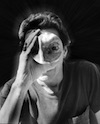 [Over the years I have heard in conversation an assortment of reactions to the 1973 “Great Debate” between myself and the late Minor White. But I can’t recall anyone publishing a considered response thereto. So I welcome this account by my friend and colleague Harris Fogel, who recalls its impact on him a few years later, during his student days in northern California.
[Over the years I have heard in conversation an assortment of reactions to the 1973 “Great Debate” between myself and the late Minor White. But I can’t recall anyone publishing a considered response thereto. So I welcome this account by my friend and colleague Harris Fogel, who recalls its impact on him a few years later, during his student days in northern California.
You’ll find my half of that dispute, in three installments, posted here, starting with Part 1. Camera 35 published the complete version of my critique alongside a response from White in its November 1973 issue. Subscriber and periodic sponsor A. David Wunsch, who had a copy thereof handy, supplied scans that you can download here as a pdf file. — A.D.C.]
•
A Response to A.D. Coleman’s Critique of Minor White’s Octave of Prayer
by Harris Fogel
Allan Coleman’s recent posting here of his 1973 examination of Minor White’s curatorial practices rekindled memories of the impact those essays had on my own life in photography.
One of the most important — in fact seminal — days in my youthful understanding of photography as a medium that went beyond imagery or the personalities of photographers was the day in our undergraduate photography class at Humboldt State University (HSU) that the discussion turned to some writings by A.D. Coleman. This was roughly 1979-1980. While I believe it was Tom Knight (the head of the HSU photo program) who assigned and discussed the essays, it could have been Thomas Joshua Cooper, who (if I recall correctly) was there as a replacement for someone on sabbatical.
So, while I can’t remember the exact circumstances or timeline, recalling the discussions about Minor White and John Szarkowski based on essays by Coleman is easy. Around this time, we also had a series of wonderful visiting lecturers: Coleman himself, Andy Grundberg, Manuel Alvarez Bravo, Judy Dater, Hamish Fulton, and Sam Wagstaff. (My experiences with Wagstaff are included in Wagstaff: Before and After Mapplethorpe: A Biography, by Philip Gefter.) During a party at Tom Knight’s home after Coleman’s public lecture, he said that if I came to New York I should give him a call. Years later, while a student in the New York University/International Center of Photography graduate program, I took him at his word, becoming his intern, which led to a lifelong friendship.
Even though I had studied and obsessed over photography since I was ten years old, and despite poring over photo-history texts and monographs, my understanding of photography was primarily centered on a nexus of rotating styles of imagery and what now seems like the cult of personality. Edward Weston was, to me, this purist artist, uncompromising in his vision, mirrored in the spartan yet sensuous lifestyle manifested throughout his Daybooks. The same held true for other photographers. But what was missing was the discussion of why we knew a slew of photographers and not others. Absent from that parade of images and personalities was the context of the business of photography.
History is written by the victors, as the adage goes; that certainly applies to photo and art history as well. William Mortensen was a loser, while Weston was a victor; thus the inclusion of Weston in the history books, and the near extinction of Mortensen, who arguably was far more influential in his time. So, when Coleman came to visit at HSU, that — combined with the assignment of Light Readings as a text — set the stage for an understanding of the politics and business of being a photographer.
![]() The publication in Camera 35 in November 1973 of his complete essay on Minor White’s Octave of Prayer (originally intended to appear in the Village Voice in early 1973), which included the news that the Voice‘s editorial decision not to publish the second half of Coleman’s essay led to his resignation from that paper, came as a shock to our little community of photography students in Arcata, California, sheltered as we were by the “Redwood Curtain” — a world away from the relative cultural cornucopia of San Francisco to the south of us, not to mention the influential photo scene on the east coast.
The publication in Camera 35 in November 1973 of his complete essay on Minor White’s Octave of Prayer (originally intended to appear in the Village Voice in early 1973), which included the news that the Voice‘s editorial decision not to publish the second half of Coleman’s essay led to his resignation from that paper, came as a shock to our little community of photography students in Arcata, California, sheltered as we were by the “Redwood Curtain” — a world away from the relative cultural cornucopia of San Francisco to the south of us, not to mention the influential photo scene on the east coast.
Coleman’s later “Open Letter” concerning the power wielded by John Szarkowski, then curator of the Museum of Modern Art’s Department of Photographs (published in Picture magazine in 1978), raised comparable questions about another of the medium’s prominent gatekeepers. So those essays, and the discussions that followed, came as an epiphany comparable to Toto’s pulling the curtain open to reveal the real Wizard of Oz, manipulating in secret the images and voice of the Wizard.
The questions raised by Coleman are no less pertinent today than they were almost 40 years ago. Is there such thing as a “photo community”? How did the inclusion of certain photographers in the canon of photography come about? No less importantly, what lay behind the exclusion of specific photographers, and even entire classes of photographers?
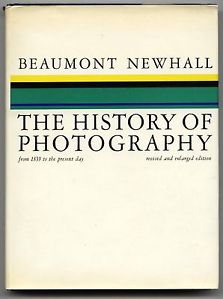 Those essays were some of the first glimpses I and my fellow students (perhaps our faculty too) had into the politics of the photography sector of the art world. We knew that a Picasso was worth millions of dollars as a result of a complex art market we didn’t really understand. We knew of Ansel Adams, to be sure; but, until Coleman, we didn’t know that, though once dismissed by Szarkowski, Adams made a sizable donation to the Department of Photographs at the Museum of Modern Art that was followed soon thereafter by a huge touring retrospective exhibition of his work at MoMA.
Those essays were some of the first glimpses I and my fellow students (perhaps our faculty too) had into the politics of the photography sector of the art world. We knew that a Picasso was worth millions of dollars as a result of a complex art market we didn’t really understand. We knew of Ansel Adams, to be sure; but, until Coleman, we didn’t know that, though once dismissed by Szarkowski, Adams made a sizable donation to the Department of Photographs at the Museum of Modern Art that was followed soon thereafter by a huge touring retrospective exhibition of his work at MoMA.
This was the marketing of photography laid bare, and, to anyone paying attention, what Coleman was attempting wasn’t merely discussion of the work but discussion of the context behind our History of Photography textbook by Beaumont Newhall. Nowadays restaurants often feature the kitchen front and center for all to view, reinforcing the transparency of creation. By contrast, Coleman pointed to the fact that most of our understanding of photography was based on the fact that photography’s “kitchen” was carefully hidden from view.
For me, Minor White was a legendary figure. My parents allowed me to subscribe to Aperture on and off starting while I was in junior high school. But reading Aperture never led to me to question the contents, nor to seek any realistic understanding of White as a man. For me, it was all about images, and it wasn’t till Coleman appeared as required reading in college that a broader understanding of White became possible.
To the current generation, how White used images — or, according to Coleman, misused them — may seem a tempest in a teapot. However, at the time, the nascent photography community (if that is the proper description) was a literate, impassioned group. It was also a much smaller “community” then. There was no internet for immediate distribution of work to millions around the globe; self-published photo books required a serious financial commitment, and distribution required a network of brick-and-mortar bookstores.
For us as members of the audience for criticism, the only choices were to wait for a column in the newspaper or the delivery of a photo magazine; after that, the choices were few. When it came to photo criticism, one could argue that the first serious manifestations thereof were Coleman’s columns in the Village Voice and then the New York Times. As a young undergraduate student in photography, I found his essays afforded me the first serious behind-the-scenes glimpse into how the history of photography as a medium had been presented to us. The argument that there were larger forces at work mirrored our understanding of the election of Reagan, the environmental policies of James Watt, the Iran-Contra affair, and the local protests for and against the protection of old-growth redwoods.
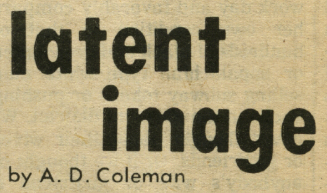 What Coleman did for us, and certainly for myself as a future photo educator and curator, was to instruct us by example never to ignore the forces that propel the visibility and inclusion of certain photographers over others. In a way, I could credit my lifelong skepticism toward the power structure behind every aspect of cultural and political life in part to Coleman, whose analyses mirrored my parent’s constant embrace of civil-rights progress and disgust with the corruption of public and private institutions alike.
What Coleman did for us, and certainly for myself as a future photo educator and curator, was to instruct us by example never to ignore the forces that propel the visibility and inclusion of certain photographers over others. In a way, I could credit my lifelong skepticism toward the power structure behind every aspect of cultural and political life in part to Coleman, whose analyses mirrored my parent’s constant embrace of civil-rights progress and disgust with the corruption of public and private institutions alike.
I’ve taught photo history for almost 30 years, and during that time my classes attempted (sometimes successfully, sometime not, as with any teaching not done by rote) to provide context for the photographers and movements in the medium. Can one teach Robert Mapplethorpe or Peter Hujar without a discussion of Stonewall, the NEA, Jesse Helms, the Moral Majority, or Andres Serrano? To my mind, no; to do so is to strip away the importance of the work, which is the context of the times and political movements and opposition that they work reflects.
Is this a popular view among undergraduate students hoping to meet a general education or core Liberal Arts requirement with minimal effort? Not necessarily. But if it has the long-term impact of raising consciousness, of instilling a mistrust of institutional power and an awareness of the writing of history from the victors’ point of view, then it has significant value. A “digression” into context has meaning far beyond the photo on the screen.
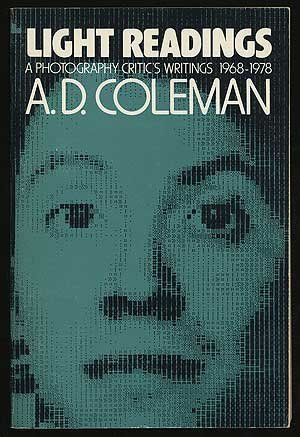 It bears noting that the first class I had in photography that led to a serious discussion of photography from a political and literary perspective was Thomas Joshua Cooper’s “History of Photo” course at HSU. The required and recommended texts included Light Readings by Coleman, Photographers on Photography by Nathan Lyons, Second View: The Rephotographic Survey Project by Mark Klett and Ellen Manchester, and, naturally, Cooper’s own Dialogue with Photography, written with Paul Hill. These number among other titles that I and my then-classmate and girlfriend Nancy Burlan (now my wife) still own and reference.
It bears noting that the first class I had in photography that led to a serious discussion of photography from a political and literary perspective was Thomas Joshua Cooper’s “History of Photo” course at HSU. The required and recommended texts included Light Readings by Coleman, Photographers on Photography by Nathan Lyons, Second View: The Rephotographic Survey Project by Mark Klett and Ellen Manchester, and, naturally, Cooper’s own Dialogue with Photography, written with Paul Hill. These number among other titles that I and my then-classmate and girlfriend Nancy Burlan (now my wife) still own and reference.
By comparison, my other art-history coursework excluded or minimized discussions of gender, sexuality, and cultural disruptions, diving deeply into the work from a stylistic and genre point of view. When the politics of the day were discussed, it was often as a mere footnote to the traditional concerns of those classes.
One of Coleman’s didactic lessons is that it’s impossible to ignore those forces when considering photography — after all, much of its history revolves around the fact that it was considered a lesser art form (and not even an art form to many, just a consequence of physics and chemistry). So, when discussing Nadar’s fight to represent photography in the Paris Salon in 1859, it’s seemingly impossible to leave politics, finance, and institutional power structures out of any discussion of photography at the time.
By raising the issue of the often invisible (to outsiders) battle to gain mindshare for specific artists, and thus link the possible financial gains offered by institutional support for an artist or movement, Coleman asks the reader to question what might be termed collaboration between what is now termed the Art Market and public assumption of purity often accorded museums. For the more cynical, swapping the word “collusion” for “collaboration” would seem to make more sense. Plainly put, artists, galleries, and dealers profit from the imprimatur of museums, and that is what had been left out of my entire art education until Coleman sparked that discussion.
As a realist, I know that museums and galleries have a strong and often important impact upon setting trends and styles of the day, and business is after all business. Photographers deserve to pay the bills, as would any other laborer. This is not necessarily a criticism, but rather an enlightened awareness of the forces that determine who a generation gets trained to accept as important vs. who numbers among the forgotten.
In a sense, I viewed Coleman’s writings as a plea for us to become political and cultural activists, just as much as they were about photo criticism. (Coleman might argue that this aspect of his work was primarily concerned with understanding and questioning institutional forces — acknowledging the importance of the power structures of the art/photo world and their impact on our cultural belief systems.)
If anyone remembers or refers to Minor White’s Light7, Be-ing Without Clothes, Octave of Prayer, or Celebrations today, it’s most likely not for the images included, but rather for the ideology represented and posited by White in his curatorial texts for those projects. In a time when images are appropriated without the knowledge of or permission from photographers (by artists from Rauschenberg to Prince and Koons), and documentary work gets distorted editorially to support a different narrative from what the photographers intended, White’s use of contributors’ work to serve his own polemical and spiritual leanings is no less vital an issue today than it was then.
Do essayists like Coleman matter to the medium? I think they do, provided you are paying attention. My classmates and myself were lucky: for a few short years, people who insisted that we pay attention and take the issues seriously surrounded us. For me, that’s what photo education is supposed to be about, and those essays by Coleman laid for us the groundwork for moving forward with a keen awareness of the complex issues beyond the images.
— Harris Fogel, Springfield, PA
•
Text copyright © 2018 by Harris Fogel. All rights reserved.
•
Harris Fogel is a documentary and fine-art photographer with an extensive background in digital imaging, criticism, photojournalism, and photo history. Fogel has directed, curated, and organized more than 250 photography exhibitions over the past 20 years. His own work can be found in the collections of many museums, including The Metropolitan Museum of Art; The National Museum of American Art at the Smithsonian Institution; the International Center of Photography; the Los Angeles County Museum of Art; the Bibliothèque Nationale, Paris, France; and the High Museum of Art, Atlanta.
Fogel’s artist’s books are found in the library of the Museum of Modern Art in New York. He is host and executive producer of Mac Edition Radio, an online resource for technology, photography, music, audio, and digital imaging. He has lectured on photography around the country and in Europe for the U.S. Department of State. Fogel has written for art, photography, and technology-related publications and projects, and taught photo history for almost 30 years.


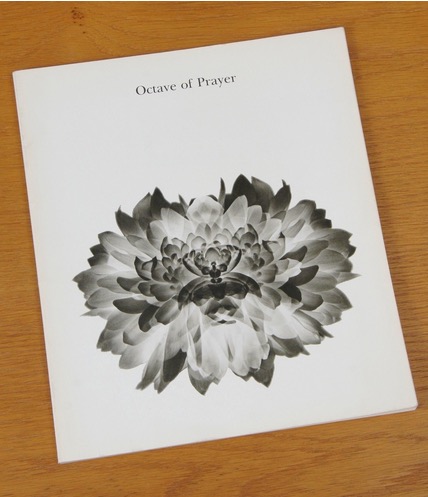
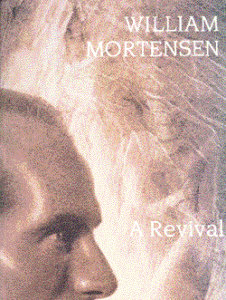
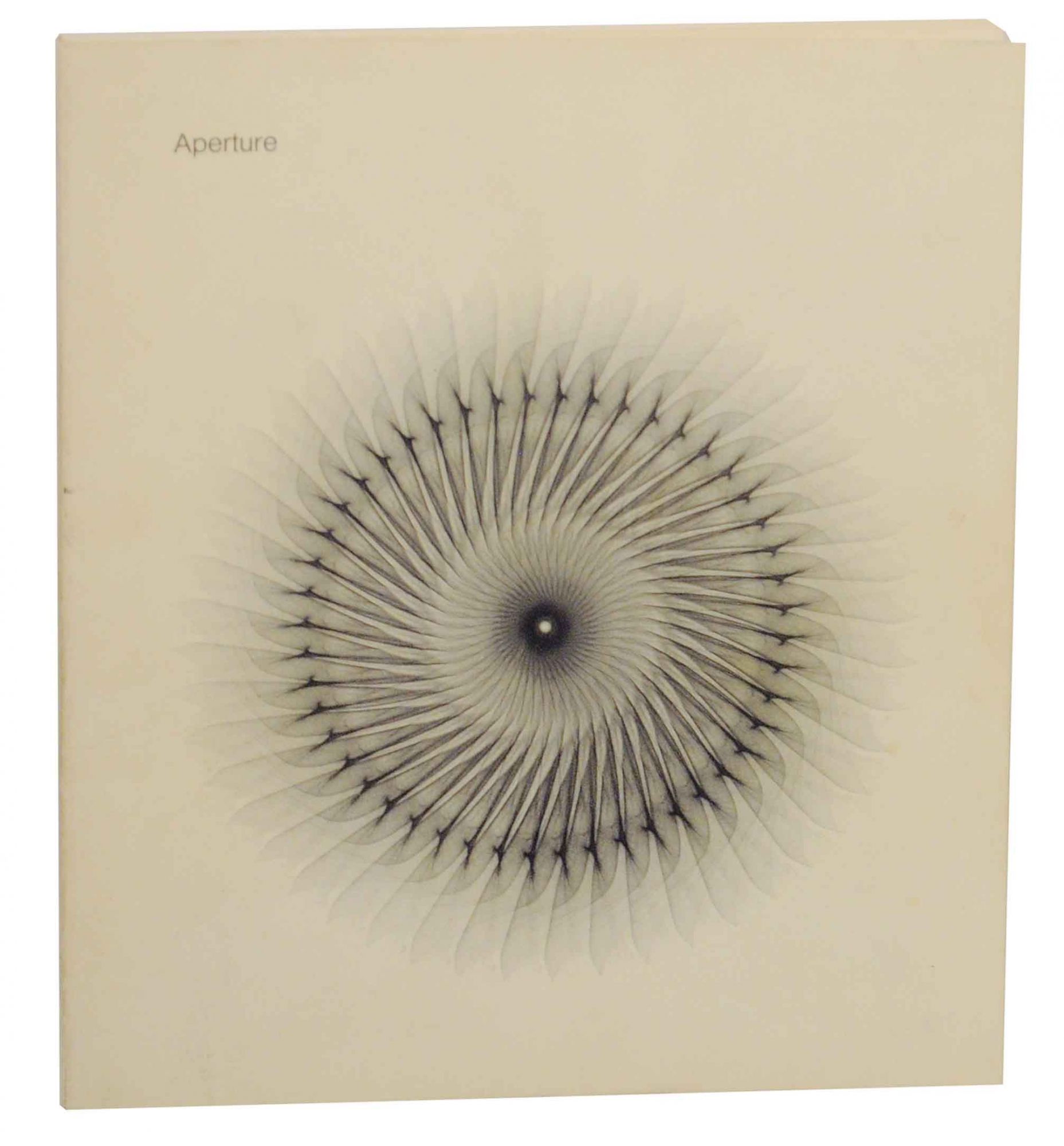
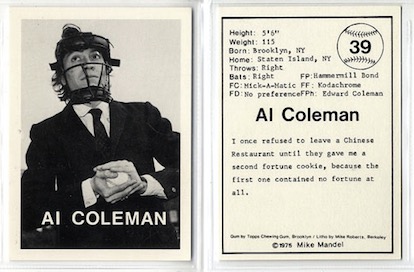
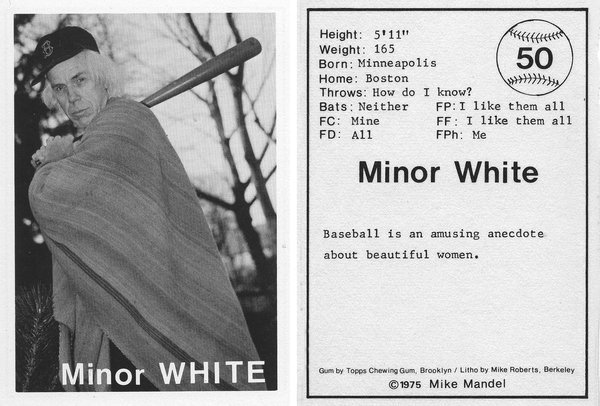





Page 37 of the Camera 35 scans is missing.
Thanks for catching this. Fixed now — try the link again.
As one who has always seemed to favor artists outside of the “chosen” and perhaps becoming one myself I have thoroughly enjoyed this discussion. My only encounter with Minor White was when he visited Geneseo, where Michael Teres invited hm to speak. I recall the room was flooded with people from Rochester and Buffalo who journeyed to see him. My most vivid memory was when Minor asked the audience to close their eyes after viewing an image on the screen and to “taste” the photograph on their tongue. I must admit I had never considered that before.
Insightful historical perspective Harris many thanks.
Thank you!
There are now no Newhall’s, Szarkowki’s, or Ansel Adams creating a current pantheon of acceptable photographers. Thankfully so. Market forces for better or worse now dictate much of what is available to see first hand.
Thankfully print on demand photography books are now available to the photographer/artist. This of course was not available when Minor White published Aperture.
Would we know of Carl Chiarenza, Walter Chappell , Frederick Sommer or Clarence John Laughlin without Aperture ?
For all of Minors faults we should be grateful .
Aperture the magazine was Minor’s baby. Aperture the book-publishing venture (including the strategy of creating “double issues” of the magazine, sending some softcover copies out to fulfill subscriptions, and hard-binding others for the book market) was Michael Hoffman’s brainstorm.
Carl Chiarenza co-founded and co-edited the “little” magazine Contemporary Photographer, a short-lived but important alternative to Aperture. He published important theoretical essays in Afterimage, and a book on Aaron Siskind, one of the medium’s first critical biographies. He also has exhibited widely, and became an influential teacher in his own right.
Walter Chappell co-founded the short-lived but influential Association of Heliographers; shared with Nathan Lyons and Syl Labrot an important monograph, Under The Sun (NY: George Braziller, 1960), that includes an important manifesto he penned; and also exhibited widely.
Clarence John Laughlin published his classic Ghosts Along the Mississippi (NY: Charles Scribner’s Sons, 1948) well before Aperture was founded. Though ignored by the photo establishment, he exhibited and published extensively before that Aperture book came out in 1974 (another of Hoffman’s double-issues that became a hardcover book).
The Aperture issue on Frederick Sommer was the first substantial publication of his work, I believe. (Yet another double issue/book.) But Sommer astutely parlayed his own reclusiveness and willful scarcity of prints into a market for his work (and a pricing thereof) that owed way more to Marcel Duchamp than it did to Minor White.
If we’re going to talk about history, we need to start by getting the basic, verifiable facts right.